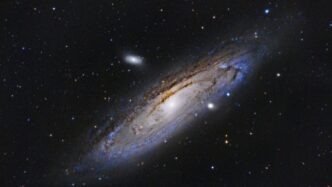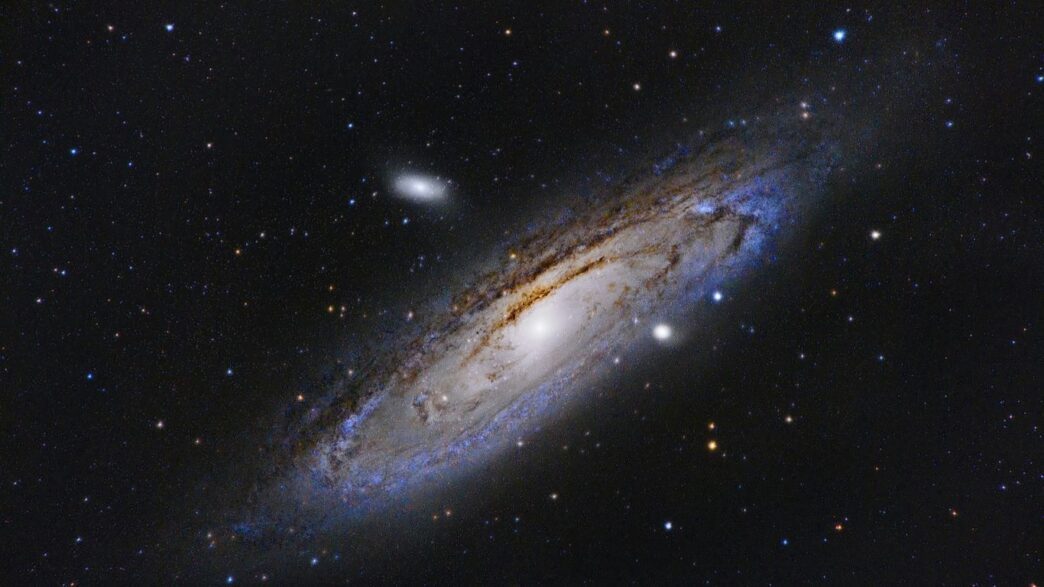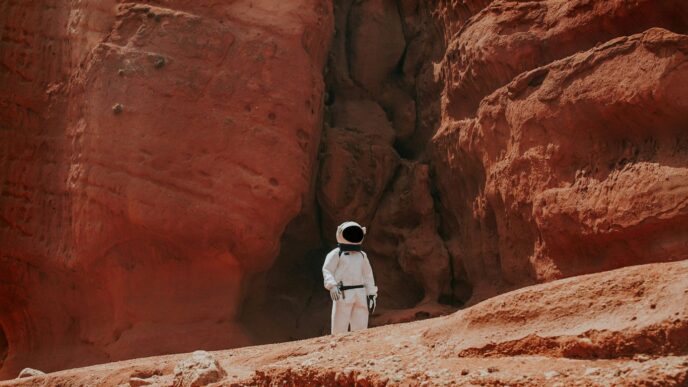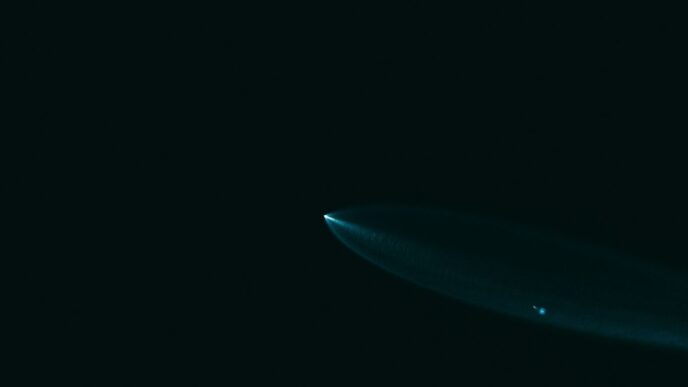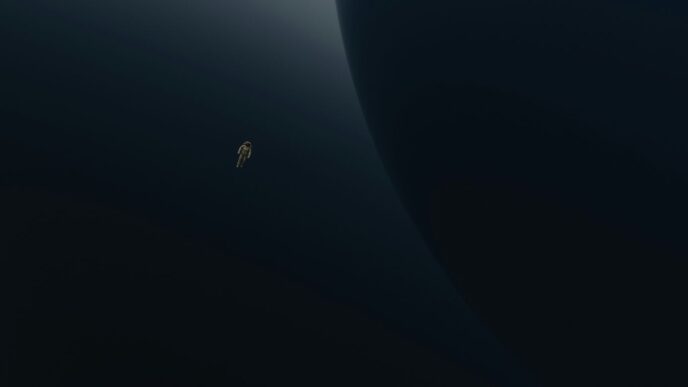Astronomy News Today: Unveiling Planet Formation Mysteries
First-Ever Images Captured of a Planet Being Born
For the first time ever, astronomers have snapped a clear image of a planet forming around a young star. You hear about planet formation in textbooks, and scientists have modeled it for decades, but seeing it happen directly? That’s new. This happened thanks to the James Webb and some clever observing tricks. The planet, located in a protoplanetary disk hundreds of light-years away, is still swaddled in its birth cloud. This image is changing the way scientists talk about planetary birth, giving them a chance to spot things like swirling gas and the first solid material clumping together.
Here’s what’s being learned from these new images:
- Gaps are visible in the disk around the star, cut by the baby planet as it orbits.
- Astronomers can watch how dust and gas are shaped by a planet’s gravity in real time.
- The light from the growing planet tells researchers what its atmosphere might be made of—even before the planet cools down.
Warped Planet Nurseries Reshape Theories of World Creation
So it turns out, not all planet nurseries are flat like vinyl records. Some are warped, bent or even spiraled. Until recently, scientists pictured solar systems forming like neat pancakes around young stars. But now, new telescope data—especially from Webb—shows that things get twisted. Maybe a passing star, maybe uneven gas pressure, but something is making these nurseries wonky.
Why does this matter? Warped disks rewrite how worlds might be created. Researchers see that planets in these areas can end up with strange, out-of-plane orbits, or even get kicked far from their stars. Here’s what’s being looked at:
- How disk warping affects planet sizes and spacing.
- Why some exoplanets spin in weird tilts, possibly from their wild nursery days.
- Whether warped nurseries are common, or just rare cosmic accidents.
Gas Giant Origins Unraveled by Distant Star Observations
Gas giants like Jupiter have always puzzled astronomers. One big head-scratcher: how do they form way out at the edge of their solar systems? A recent study tracked a very young, faraway star system with new, sensitive observatories. Researchers finally watched gas gathering into a jumbo planet—way farther out than theory once said was possible. Turns out, there are a couple of ways these giants can take shape:
| Formation Scenario | Key Features | Evidence Seen |
|---|---|---|
| Core Accretion | Slow ice/rock buildup | Slight signals |
| Disk Instability | Quick collapse of gas | Strong clumping |
Scientists see strong clumping in the outer disk—almost like the disk just collapsed into a planet overnight. Old theories said this wasn’t possible so far from the star, but the universe, once again, doesn’t care about what we expect. Now, folks are scrambling to update planet formation models, since this may explain a bunch of weird exoplanets found in recent years.
In short, the newest research isn’t just confirming old stories about planet formation—it’s rewriting the script almost from scratch. The more we look, the messier and more surprising the birth of worlds turns out to be.
Exploring the Enigmas of Black Holes and Cosmic Collisions
Black holes and cosmic collisions grab the headlines for a reason. There’s always something surprising coming from these cosmic heavyweights, and the past year proved that point. Let’s walk through some recent discoveries—honestly, these stories are wilder than most sci-fi.
The Strangest Supernova and What It Taught Us
Supernovas are the ultimate cosmic fireworks, but every now and then, astronomers spot one that just does not fit any known category. Earlier this year, a supernova stunned astronomers by refusing to fade away as expected. Instead of dimming, it actually became brighter, flipping the playbook on what happens when a massive star explodes.
Here’s what the team learned:
- The supernova’s light kept getting stronger, not weaker.
- Its core didn’t collapse as predicted—instead, it acted like there was something extra holding it up.
- Follow-up studies suggest a hidden neutron star or even a black hole could be feeding energy back into the explosion.
Now, scientists are searching for similar "oddball" supernovas, hoping for even more surprises.
Record-Breaking Black Hole Merger Measured for the First Time
Black holes colliding isn’t new, but the recent detection of the most powerful merger yet felt like a game-changer. Using advanced observatories like LIGO and Virgo, teams finally managed to catch the actual speed at which the merged black hole recoiled, or as they put it, got a "kick" out of the collision.
| Event | Masses Involved (Solar Masses) | Kick Velocity (km/s) |
|---|---|---|
| GW250814 | 66 + 45 | 1500 |
| Record Merger | 85 + 66 | 5000 (approximate) |
Some highlights from this first-ever measurement:
- The merged black hole was ejected from its home galaxy at mind-blowing speeds.
- This discovery means black holes can wander, not just sit at galaxy centers.
- Simulations, for once, actually matched up to what was seen.
Hidden ‘Red Dots’ Reveal Early Black Hole Formation
With newer telescopes, astronomers keep spotting faint, stubbornly red objects far in the Universe’s past. For a while, nobody was sure what they were. But now, it’s looking like these “red dots” could be the first signs of black holes swallowing up gas and growing faster than anyone thought.
Let’s break down why these dots matter:
- They don’t give off much light, but the little they do is weirdly red, hinting at huge distances.
- Observations suggest they’re too compact and hot to just be stars, pointing to young black holes.
- If they are what they look like, black holes started forming very soon after the first stars appeared—much earlier than models predicted.
In one sentence: These findings force astronomers to rethink how quickly and easily black holes could have shaped early galaxies. Expect even more news from this front soon—telescopes out there are just getting started.
Astounding Exoplanet Discoveries Shaking Astronomy News Today

Lately, it feels like every few weeks, astronomers are announcing something wild about new worlds circling distant suns. We’re now living in the era where “alien planets” aren’t sci-fi—NASA just confirmed its 6,000th one. And the latest batch is truly strange, even by exoplanet standards.
NASA Confirms the 6,000th Alien World—Many Are Truly Bizarre
The list of exoplanets keeps growing, and the surprises keep coming. Here’s a snapshot of some oddballs:
| Planet Name | What Makes It Strange | Distance from Earth |
|---|---|---|
| TOI-700 d | Earth-sized, habitable zone | 101 light-years |
| WASP-189 b | Hotter than most stars | 322 light-years |
| LTT 1445 Ab | Orbits three stars | 22 light-years |
| Kepler-16b | Circles a pair of suns | 200 light-years |
Not every discovery looks like the rocky orbs we’re used to. Some worlds are puffed up like balloons and sit way too close to their star, while others are pitch-black, absorbing almost all light. It’s a jumble out there.
Steam Worlds and Rogue Planets Challenge Life’s Search
More telescopes are spotting planets with thick, steamy atmospheres or ones totally on their own, not bound to any star. Scientists have nicknamed these “steam worlds” and “rogue planets.”
Things we’ve learned about these weirder worlds:
- Steam worlds have vapor-rich atmospheres, making them tricky for searches for life.
- Rogue planets drift in space without a sun, sometimes carrying their own heat sources.
- New evidence shows these lonely planets might be much more common than we thought.
All this makes the hunt for life more confusing, but also a lot more interesting. Hard to know what to expect, really.
Webb Telescope Detects Hints of Atmospheres on Distant Worlds
The James Webb Space Telescope has changed the game for planet hunters. Recent readings found what look like the first clues of atmospheres on a few small, rocky exoplanets. There’s no proof of life, but there’s now real hope that at least some of these places have weather, clouds, and maybe even chemistry like Earth.
Three ways Webb is changing how we study distant worlds:
- Webb can see starlight filtering through exoplanet atmospheres, picking up telltale gases like water vapor and methane.
- The telescope’s sharp vision helps rule out false positives (previous signals we thought were atmospheres but were actually just noisy data).
- Webb’s new findings guide where other telescopes, on the ground and in space, should point next.
So, it’s a pretty good time to be excited about exoplanets. With stranger worlds showing up all the time, who knows what’s coming next?
Advancements in the Search for Extraterrestrial Life
Looking for signs of life beyond Earth is still a big focus in astronomy, and honestly, things are heating up this year. From strange Martian rocks to ocean plumes spewing from icy moons, scientists are finding new hints and zeroing in on places that just might host something alive. We’ve also got massive observatories and radio antennas listening out for possible cosmic signals. Here’s what’s new and why people are getting pretty excited.
Mars and Its Strange Rocks Show Strongest Life Clues Yet
Mars is once again in the spotlight, and the rocks are telling a story that’s tough to ignore. NASA’s Perseverance rover recently found some very odd patterns in Martian rocks—some with spotted textures and others with sulfate-rich veins that look a lot like they’ve been shaped by water. Scientists are going nuts over the microstructures because some of these patterns seem similar to what bacteria produce here on Earth. It doesn’t mean there’s life for sure, but the case for ancient life keeps getting stronger.
- Rovers are now targeting the oldest, most sheltered rocks in old lakebeds.
- Lab equipment on Perseverance is sampling soil that could contain fossilized microbes.
- Geologists have called some new samples "the best evidence yet"—but they’re still waiting on results from upcoming sample return missions.
Enceladus’ Plumes Offer Stunning New Hints for Life
Saturn’s moon Enceladus has always been on the radar for ocean worlds, but this year, plumes of water vapor shooting from its south pole have shown even more promise. The James Webb Space Telescope detected complex organics in those plumes—not just simple stuff, but molecules tied to amino acids and possible metabolic reactions.
A quick rundown of Enceladus’ findings:
| Plume Feature | Detected Molecules | Potential Significance |
|---|---|---|
| Water vapor | H2O, organics | Indicates subsurface ocean |
| Hydrogen | H2 | Possible chemical energy source |
| Complex organics | Various | Building blocks for life |
Scientists can’t yet say if there’s life below the ice, but they’re pushing hard for sample missions that fly right through those plumes. Imagine: a DNA sequencer whizzing past Saturn.
SETI Refines Its Strategies for Finding Aliens
The search for signals from intelligent life isn’t letting up at all—if anything, it’s getting sharper by the month. SETI researchers just finished upgrades to major radio telescopes, and they’re narrowing their search windows using new data from nearby planetary systems.
Some key changes in SETI’s strategy this year:
- Larger sky surveys using AI to flag suspicious signals.
- Focusing more on Earth-sized exoplanets in habitable zones around quiet stars.
- Rethinking what an alien message might look like—instead of just checking for obvious beeps or pulses, they’re considering possible engineered light pulses or even brief flashes from alien technology.
All told, 2025’s batch of discoveries and project upgrades put us closer than ever to answering that big old question: Are we really, truly alone? Scientists would say we’re not there yet. But with Mars, ocean worlds, and SETI all in the mix, the next few years could be game-changing.
Breakthroughs in Understanding Dark Matter
Tracking down the true nature of dark matter is a bit like trying to find your keys when you’re sure they’re in your bag—but the bag is invisible and so are your keys. Even though dark matter makes up most of the material in our universe, nobody’s been able to see it directly.
Milky Way’s Hidden Star Systems Could Hold Dark Matter’s Secrets
Lately, scientists have been focusing on overlooked chunks of our own galaxy: faint, hidden groups of stars orbiting the Milky Way. These dim clusters might act like cosmic traps for dark matter, letting us map out where this mysterious stuff gathers. Here’s why these star systems are getting so much attention:
- They’re some of the oldest structures in the galaxy, probably left over from its earliest days.
- Their movements can reveal the invisible tug of dark matter.
- Studying their composition gives us ideas about the history of matter in our galaxy.
Researchers use telescopes that track shapes and movement of these star systems, hoping to catch the gravitational trace dark matter leaves behind.
Moon Missions May Help Weigh Elusive Dark Matter Particles
This might sound wild, but the Moon could soon help us solve a cosmic mystery. New research suggests that sending sensitive detectors to the lunar far side could let us weigh individual dark matter particles!
Here’s how:
- The Moon’s lack of atmosphere and thick crust means fewer cosmic disturbances.
- Detectors planted there could spot tiny shifts caused by passing dark matter.
- By measuring these shifts, scientists hope to figure out the mass of dark matter particles.
If successful, this would be a breakthrough—it’d be like going from knowing there are fish in a pond to finally catching one and seeing what it is.
Einstein Crosses and Strange Cosmic Fingerprints Detected
Astronomers have recently gotten lucky by spotting something extraordinarily rare: an Einstein Cross. That’s when the light from a distant galaxy gets bent around a massive cluster, showing up as four or five images arranged in a cross pattern.
These rare patterns act like cosmic magnifying glasses, letting us peek at dark matter halos otherwise impossible to spot.
| Einstein Cross | Number Observed (2022-2025) | Dark Matter Evidence (Yes/No) |
|---|---|---|
| HerS-3 | 1 | Yes |
| RXJ1131-1231 | 2 | Yes |
Scientists noticed strange features in light passing through these gravitational lenses—sort of smudges and stretches—that don’t match the visible matter. They’re starting to call these “cosmic fingerprints” of dark matter, and every new observation helps fill in the giant puzzle of what really binds our universe together.
So, while we haven’t seen dark matter face-to-face, these developments feel like we’re inching closer, piece by piece, to figuring out what’s hiding in the dark.
New Insights Into the Solar System’s History and Dynamics
Our solar system just keeps throwing us curveballs. Every few months, it seems like astronomers are tearing up old textbooks, thanks to wild new observations and unexpected data—especially about Jupiter, asteroids, and those ice giants way out on the edge. Below, I’ll walk through some of the most fascinating stories that are shaping the latest theories.
Jupiter’s Surprising Core Formation Explained
Turns out, Jupiter’s core might not be anything like the dense, solid ball scientists pictured for decades. Recent research is suggesting it’s actually a hazy blend of rocks and hydrogen—a kind of soupy center rather than something hard and solid. A big clue came from measurements of Jupiter’s gravitational field, revealing inconsistencies with earlier models. This might mean Jupiter swallowed a bunch of smaller planets or heavy rocks when it was forming.
Key takeaways:
- Jupiter’s core could be more like a thick, fuzzy mix than a classic solid sphere
- The planet probably gobbled up wandering space debris during its growth
- Understanding Jupiter’s insides helps us figure out how giant planets form around other stars, too
Asteroids Traced Back to Ancient Cosmic Collisions
If you thought asteroids were just leftover chunks from the early solar system, think again. Lately, astronomers are finding evidence that many of these space rocks are "family members" of bigger bodies smashed apart by ancient impacts.
Take these stats—from analyses published last month:
| Asteroid Group | Estimated Age (million yrs) | Likely Origin |
|---|---|---|
| Flora | 1,000 | Collision event |
| Eunomia | 2,300 | Major impact |
| Vesta | 1,000 | Protoplanet breakup |
This tells us:
- Many asteroids once belonged to much larger, planet-like bodies
- Major crashes shaped not just asteroids but the wider architecture of the solar system
- Some of the Earth-crossing asteroids may be distant cousins of rocks that hit our Moon and planets billions of years ago
Voyager and Webb Mission Findings Transform Our View of Uranus
The Voyager 2 flyby in the 1980s was legendary, but now, new data from the James Webb Space Telescope is making us rethink what we know about Uranus. For one, researchers just found hints of a tiny moon hiding near the planet—something Voyager missed entirely. Also, Webb’s sensitive instruments are picking up unexpected heat signatures and weird weather on Uranus’ cloud tops.
Some things the new research suggests:
- The Uranian system may have more moons than we thought, possibly hiding under thick rings or deep shadows
- There could be dynamic processes happening inside Uranus, making it more active than its calm appearance suggests
- Ice giant planets, often overlooked, might have even more mysterious stuff going on than Jupiter or Saturn
All these findings don’t just rewrite astronomy textbooks—they also make our own solar system feel a bit less predictable, and a lot more interesting.
Cosmic Phenomena and Star Births Revealed

The universe isn’t just an endless space filled with stars. It’s a busy place, full of wild nebulae, newborn planets, and hidden patterns you’d never expect to find. This year, astronomers have gathered some incredible data that sheds light on the complicated ways stars and their neighborhoods come together.
Breathtaking Star Nurseries and Hidden Galaxies Exposed
Nobody really expects to spot a whole new galaxy right on their digital screen, but that’s what happened for several research teams recently. Telescope technology just keeps surprising everyone. Here are some of the recent findings:
- Scientists found a galaxy bursting at the seams with young, massive stars. These stars are forming quickly, and the galaxy hardly showed up in earlier surveys.
- In some star-forming regions, clouds of dust and gas light up with energetic X-ray bursts. These point to intense activity where new stars are being born.
- Hidden galaxies in the early universe have also been detected. Astronomers used sensitive instruments to peer through dust that usually blocks our view.
Key Table: Notable Newly Found Star Nurseries
| Star Nursery/Galaxy | Approx. Distance (light-years) | Star Formation Rate (solar masses/year) |
|---|---|---|
| Cloud SNR-132 | 17,000 | 7.5 |
| Galaxy "XFire" | 11 Billion | 200 |
| Nebula T-Loop | 5,700 | 2.1 |
Hubble and Webb Uncover Baby Stars Amid Cosmic Turmoil
It’s been a busy few months for the Hubble and James Webb telescopes. These observatories caught baby stars in places that might look chaotic at first glance. Here are a few of the standout details:
- In a cluster where scientists thought things were too wild for new stars to exist, dozens of infant stars were spotted close together.
- Webb managed to see jets of gas shooting from some of these tiny new stars. The movement is so fast, scientists had to double-check the data.
- Unusual patterns in the dust and gas have forced astronomers to rethink how quickly stars can appear in areas affected by nearby supernovae or black holes.
Stunning Images Capture the Sun’s Smallest Loops and Solar Secrets
This last part is all about our own Sun. It’s always been tricky to understand what happens on its surface, but recent close-up images have changed that. For the first time:
- Scientists have observed ultra-small magnetic loops that look like tiny ribbons, swirling just above the surface. Some loop only a few hundred miles high, compared to the Sun’s huge size.
- These loops play a role in sending heat up into the Sun’s outer atmosphere, influencing solar weather in ways nobody guessed before.
- The data even helped solve a decades-long mystery about why parts of the Sun’s outer layer are hotter than its surface. Turns out, these miniature loops may be the missing piece.
We’ll undoubtedly keep hearing about more discoveries, but these new results reshape what we know about how stars are born, grow, and affect everything around them.
Conclusion
So, that’s a quick look at some of the wild things happening in astronomy right now. Every week, it feels like there’s another surprise—whether it’s a planet being born, a comet from another solar system, or hints that Mars might’ve once been a good place for life. Sometimes, I wonder how astronomers even keep up with all the new data and discoveries. It’s honestly a bit overwhelming, but also pretty exciting. The universe is huge and weird, and we’re just starting to figure out how much we don’t know. If you’re into space, now’s a great time to pay attention. Who knows what they’ll find next week?

